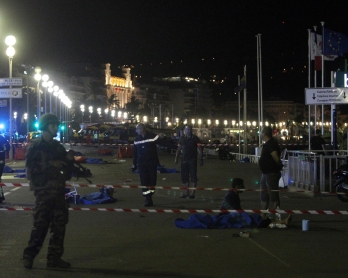Voting after the fire
Paris -- We’re always prepared for something like this. You hope that it won’t happen of course, but you’re always ready for it. And of course we’ll be ready during the presidential vote on Sunday.
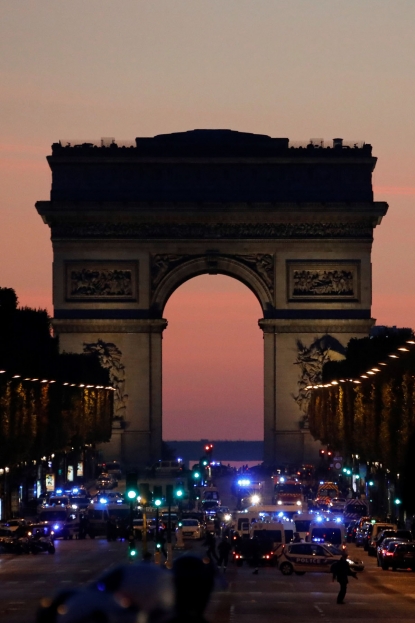 (AFP / Ludovic Marin)
(AFP / Ludovic Marin)I was already home when I heard that something was happening on the Champs Elysees. My deputy, Ludovic Marin, was heading home when he saw a helicopter circling in the sky and saw a bunch of police cars driving fast in the same direction. So he followed them. Once he got to the spot, he spoke to the people in the street, who told him that they had heard shots. He sent an email to various services, saying that there was a police operation of some kind. A little while later, we learned that a policeman had been shot dead.
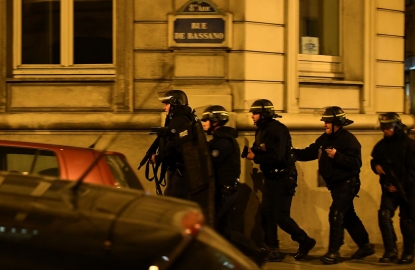 Police officers patrol near the site of a shooting at the Champs Elysees in Paris on April 20, 2017.
(AFP / Franck Fife)
Police officers patrol near the site of a shooting at the Champs Elysees in Paris on April 20, 2017.
(AFP / Franck Fife)I’m the chief photo editor for France, so my job is to coordinate. The most important thing in a situation like this is to get people to the spot, so that they can get into the zone. When there is a shooting, police close off the area. You have to have your photographers inside that area. Otherwise, they’ll be too far away to get any pictures of the scene.
 Police officers block the access of a street near the Champs Elysees in Paris after a shooting on April 20, 2017.
(AFP / Thomas Samson)
Police officers block the access of a street near the Champs Elysees in Paris after a shooting on April 20, 2017.
(AFP / Thomas Samson)The beginning of anything like this is always chaotic because you’re not sure of what’s going on. With what has been happening in Paris over the past few years, I knew that there was a possibility that there would be several shooters at various locations. I was hoping that there wouldn’t be, but it was a possibility.
I headed back into the office and called two photographers, Benjamin Cremel and Thomas Samson, to the scene (Ludovic had already managed to get a hold of Thomas). Another, Franck Fife, was passing by and let me know he was there. So the three of them ended up inside the security zone. The police were very jumpy -- at one point, it was thought there could be a second shooter -- so they were checking everyone, including our photographers.
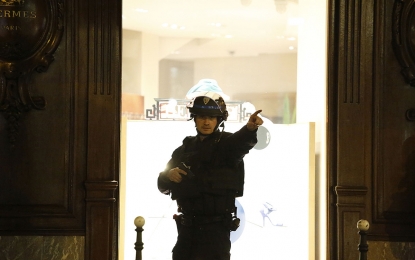 A police officer gestures as he blocks a street near the site of a shooting on the Champs Elysees in Paris on April 20, 2017.
(AFP / Benjamin Cremel)
A police officer gestures as he blocks a street near the site of a shooting on the Champs Elysees in Paris on April 20, 2017.
(AFP / Benjamin Cremel)Once you have your guys inside the security zone, the important thing is to make sure they’re not in the same place, that they go to different spots. That way, you have a different kind of photo and view of the situation. It multiplies the angles and you can have a much richer, more complete production. Also, if one of them gets kicked out -- like one of our guys did for about 10 minutes -- you’re still covered. It’s very important to have different angles and different positions.
From my point of view as a coordinator, once the guys are inside, it becomes normal coverage. You trust your people, you know that they will do the best job that they can under the circumstances. So you just sit back and wait for the production. You can organize as much as you want, but you never know what you’re going to get from the field. Only the guys on the spot know whether they’ll be able to get the shots.
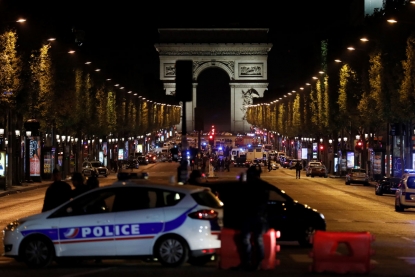 Police officers block the access to the Champs Elysees in Paris after a shooting on April 20, 2017.
(AFP / Thomas Samson)
Police officers block the access to the Champs Elysees in Paris after a shooting on April 20, 2017.
(AFP / Thomas Samson)We ended up having really good production during the night. We had really good pictures of the people with their hands up, when the police were chasing the virtual second shooter. The photographers were transmitting to the desk directly from the camera everything that they had, minute after minute. So we were able to provide clients live what was happening.
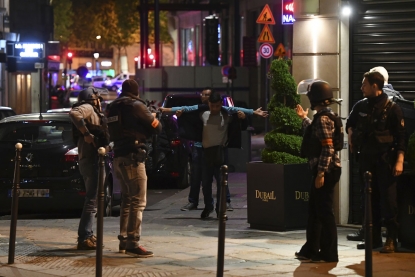 Police officers control men near the site of a shooting at the Champs Elysees in Paris on April 20, 2017.
(AFP / Franck Fife)
Police officers control men near the site of a shooting at the Champs Elysees in Paris on April 20, 2017.
(AFP / Franck Fife)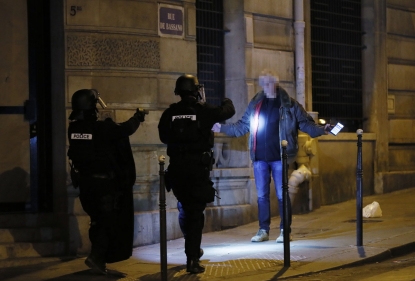 Police officers control a man in a street near the Champs Elysees in Paris after a shooting on April 20, 2017.
(AFP / Thomas Samson)
Police officers control a man in a street near the Champs Elysees in Paris after a shooting on April 20, 2017.
(AFP / Thomas Samson)
We also had images of the house of the shooter thanks to a reporter, Sarah Brethes, who managed to get them.
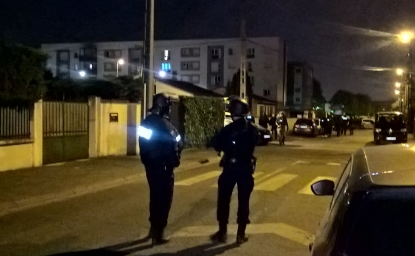 Police officer search the house of the suspected attacker who opened fire on police on Paris' Champs Elysees, in Chelles on April 20, 2017.
(AFP / Sarah Brethes)
Police officer search the house of the suspected attacker who opened fire on police on Paris' Champs Elysees, in Chelles on April 20, 2017.
(AFP / Sarah Brethes)Of course photo production is not just the photographers, but also the editors who edit and send the images to the clients. We had a normal shift on the desk and needless to say they got a much higher than usual charge of work and stayed much later than usual.
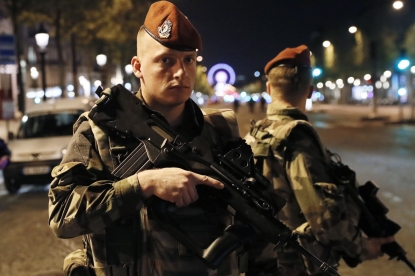 French soldiers stand guard on the Champs Elysees in Paris after a shooting on April 20, 2017.
(AFP / Thomas Samson)
French soldiers stand guard on the Champs Elysees in Paris after a shooting on April 20, 2017.
(AFP / Thomas Samson)For the first round of voting on Sunday, it’ll be all hands on deck, both in Paris and all over France. All bureaus will have at least one photographer on duty. In Paris, I have shooters covering all the 11 candidates in the morning. Then I’ll have some follow the main candidates for the rest of the day. The others will be available in case something happens.
We have our regular plan for election coverage. And we have a plan B in case something happens or goes wrong.
This blog was written with Yana Dlugy in Paris.
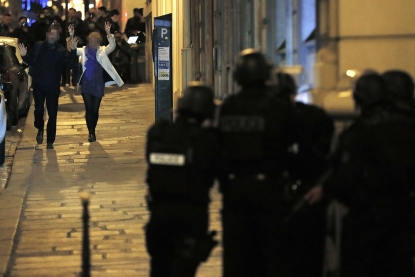 Police officers control people in a street near the Champs Elysees in Paris after a shooting on April 20, 2017.
(AFP / Thomas Samson)
Police officers control people in a street near the Champs Elysees in Paris after a shooting on April 20, 2017.
(AFP / Thomas Samson)





